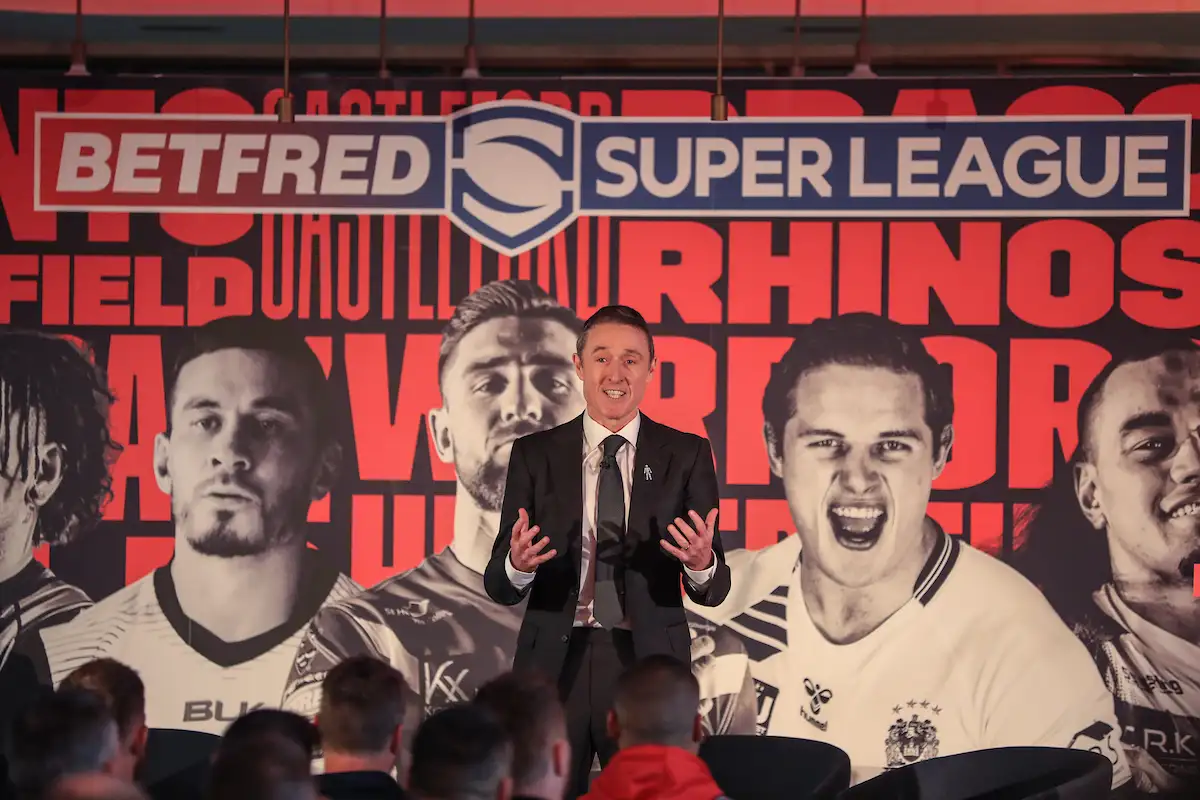Editor’s column: Anxiety reigns in rugby league

It’s hard to believe that this time a year ago, we were preparing for the new season with the usual vigour and anticipation as always.
It’s even harder to believe that some six months since the restart of Super League, albeit behind closed doors, that we’re still none the wiser as to when fans can return to games – or indeed even when the 2021 season can realistically get underway.
Super League, the only active competition in the UK following the RFL’s recent two-week suspension of training and playing, is now slated to start on March 25, a two-week delay to their initial starting plans.
However, their hopes to play 25 rounds and a Magic Weekend in front of crowds later in the season seem naive at best.
There is very little to suggest that fans will be back at games come the start of the season, and certainly not to the levels of a Magic Weekend even by late summer. Football clubs are already preparing to start next season in August with limited crowds at best.
If ever there was a year to scrap loop fixtures – particularly with the World Cup on the horizon – this was it.

It will soon be a year since fans last attended a game of rugby league in the UK on Sunday, March 15 – and no one could have foreseen the impact the pandemic would have on the world, let alone our sport.
Having been forced to sacrifice its 2020 season, with only Super League able to restart and stumble its way through a curtailed regular season which was at least celebrated by one of the greatest Grand Finals, rugby league had hoped that 2021 would bring back some normality.
🎙️ "It's Welsby! Right at the death, in the final seconds of this game, Jack Welsby has stolen it, has he?!"
St Helens win the Grand Final at the death! 🏆
📺 Watch on Sky Sports Arena & Main Event
📲 Or follow here: https://t.co/6ZM6QFrSonpic.twitter.com/X5bFllEw4K— Sky Sports News (@SkySportsNews) November 27, 2020
Yet a month in, and that normality still feels some way off. The start of the Championship and League 1 seasons have now been pushed back further, to the extent that the Challenge Cup will now only involve a total of 28 clubs this year – the 12 Super League clubs, the 13 English Championship clubs plus three willing clubs from League 1 (Barrow, Keighley and West Wales), after their season start was pushed back to May.
All of those clubs, whatever their level, face the ongoing uncertainty surrounding playing games and of course income, while still being responsible for player contracts and their day-to-day running.
Even the recent decision to suspend pre-season training was met with frustration. While understandable due to the health crisis, it frustrated clubs who had invested in getting their players back for three weeks pre-season prior to that fortnight, which was ultimately wasted time and money.
There will also be concerns over the World Cup, given the logistics that the multiple tournaments require, they will need to be sure it can go ahead with plenty of time in advance.
If nothing else, it gives us reason to ponder what’s happening off the pitch, a favourite pastime of those of us with interest in the sport since the turn of the century (guilty as charged).
The Monday papers revealed that a private equity deal for Super League was set to be rejected, though may still end up costing clubs £750k in a finders fee for the broker that introduced them to the third party.
Super League clubs reportedly turn down private equity deal – but will still need to pay £750,000 fee to the merchant bankers who secured an investor. https://t.co/llHTGjKGrB
— League Express (@leagueexpress) January 25, 2021
If this doesn’t serve as a reality check then nothing will. There aren’t even 30 full-time professional clubs in the world yet here we are with multiple executives on big salaries, club owners negotiating as if they’re Premier League and meanwhile the sport is imploding around them. Even the brand Super League is becoming to mean very little, with women’s football increasingly more likely to be associated with it than rugby league.
Sky Sports, who have underpinned the competition since its inception, initially offered almost half of what their current deal is; and though reports in League Express are their latest offer has been increased, it’s still £10m less than now.

The attitude seems to be ‘give us money’ without a compelling argument as to why. In the last 16 years, only five clubs other than the existing 12 have been given access to the top table and this decision making – of those, two have had multiple administrations (Bradford and Widnes), two no longer exist (Crusaders and Toronto) while London were allowed to liquidate and remain back in the top flight in 2005. Leigh, Salford and Wakefield have also been in administration in that period, despite the latter two being able to retain their Super League status during that time.
While negotiating a new TV deal of around £30m a year should actually be considered as a minor victory for rugby league, given the uncertain nature of both the world and the future of broadcasting, unless Super League changes the way it goes about its business, it will be merely kicking the can down the road until the next TV rights discussion, which will almost inevitably be even lower.
Two things professional sport cannot do without – fans and players, and rugby league seems to be alienating them both at an alarming rate, COVID aside.
Still, it’s nothing changing a few club logos won’t solve.